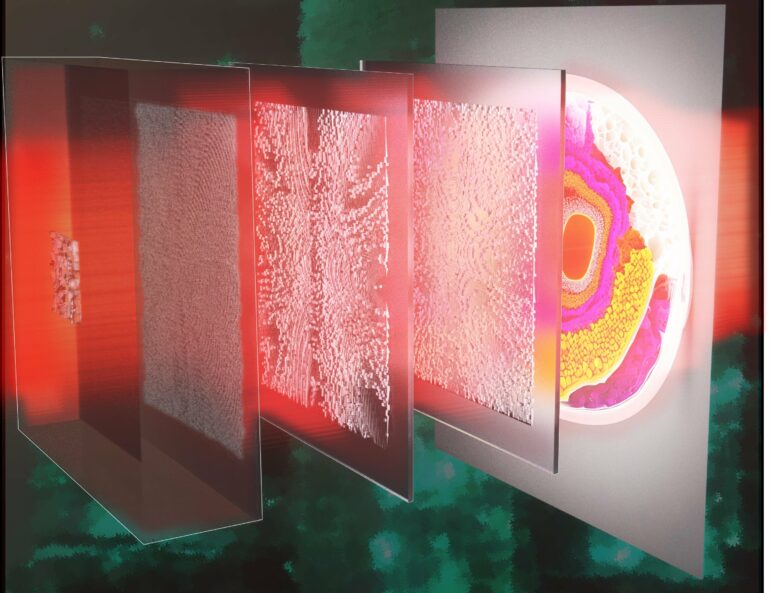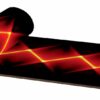UCLA researchers have created a new type of imager that can capture features much smaller than the limitations of traditional optical systems. This innovation has the potential to revolutionize fields like bioimaging, lithography and material science. The research is published in the journal eLight.
The traditional limit for resolution in optical imaging, known as the diffraction limit, restricts the ability to see details smaller than half the wavelength of light. This new imager overcomes this hurdle by employing solid-immersion diffractive encoding of spatial information.
Light from the object first interacts with a high-index material that is spatially structured using an optimized physical code, which encodes high-frequency information beyond the traditional diffraction limit. Then, a diffractive decoder that is jointly optimized with the encoder material processes this encoded information and creates a magnified image of the object, revealing subwavelength features.
This imaging system and its spatial structures, as part of the encoder and decoder materials, are designed using deep learning-based optimization. The resulting smart imager is particularly compact, with a design that is less than 100 times the wavelength of light in thickness. It also offers the advantage of directly performing quantitative phase retrieval—eliminating the need for lengthy and power-hungry computer processing.
The researchers successfully tested the imager at terahertz frequencies and demonstrated its ability to resolve features as small as λ/3.4 (where λ is the wavelength). They also showed that the imager can handle various types of objects, including both phase and amplitude structures.
This new approach has the potential to be highly adaptable for different parts of the electromagnetic spectrum. By physically scaling the diffractive features, the imager can be designed to work with different illumination wavelengths without needing a redesign.
The researchers believe this solid-immersion diffractive imager, due to its compact size, cost-effectiveness, and ability to capture subwavelength features, will lead to significant advancements in bioimaging, sensing, and material inspection.
More information:
Jingtian Hu et al, Subwavelength imaging using a solid-immersion diffractive optical processor, eLight (2024). DOI: 10.1186/s43593-024-00067-5
Provided by
UCLA Engineering Institute for Technology Advancement
Citation:
A new compact diffractive imager for subwavelength resolution (2024, June 17)



